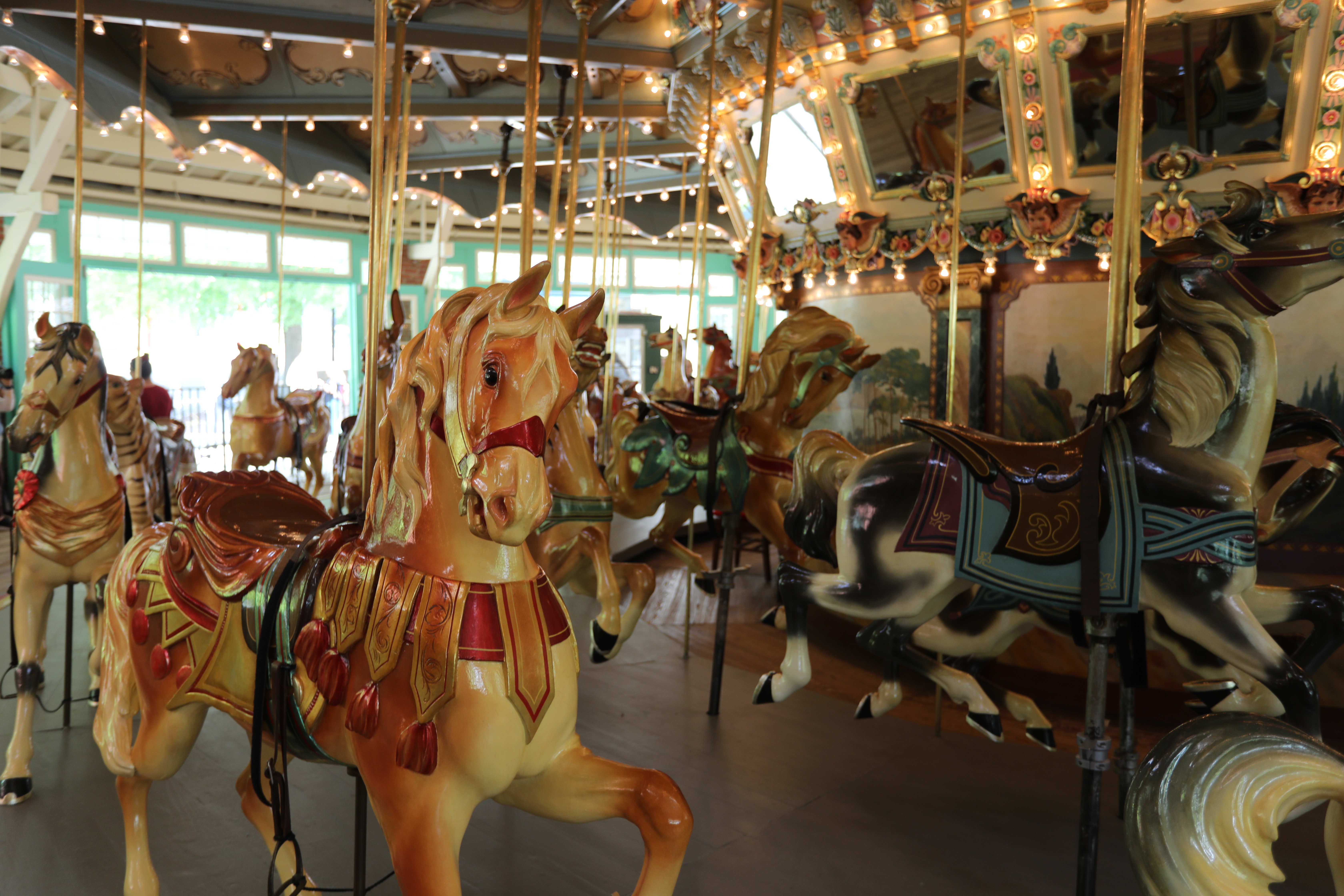| Title | Glen Echo |
| Park Code | glec |
| Description | Glen Echo Park began in 1891 as a National Chautauqua Assembly "to promote liberal and practical education." By 1911, it transformed into DC's premier amusement park until it closed in 1968. Since 1971, the National Park Service has owned and ope... |
| Location | |
| Contact | |
| Activities |
|
| Entrance fees |
|
| Campgrounds | Count: 0
|
| Places | Count: 23
ArcadeFormerly the site of the Chautauqua Hotel and Administration Building, the Art Deco Arcade was built in stages starting in 1940 to house games, such as a shooting gallery, skeeball, and other attractions. The main level of the Arcade Building now provides space for several longstanding resident arts organizations, including Adventure Theatre and the Puppet Col., as well as the park's photography, rfused glass, and music programs. 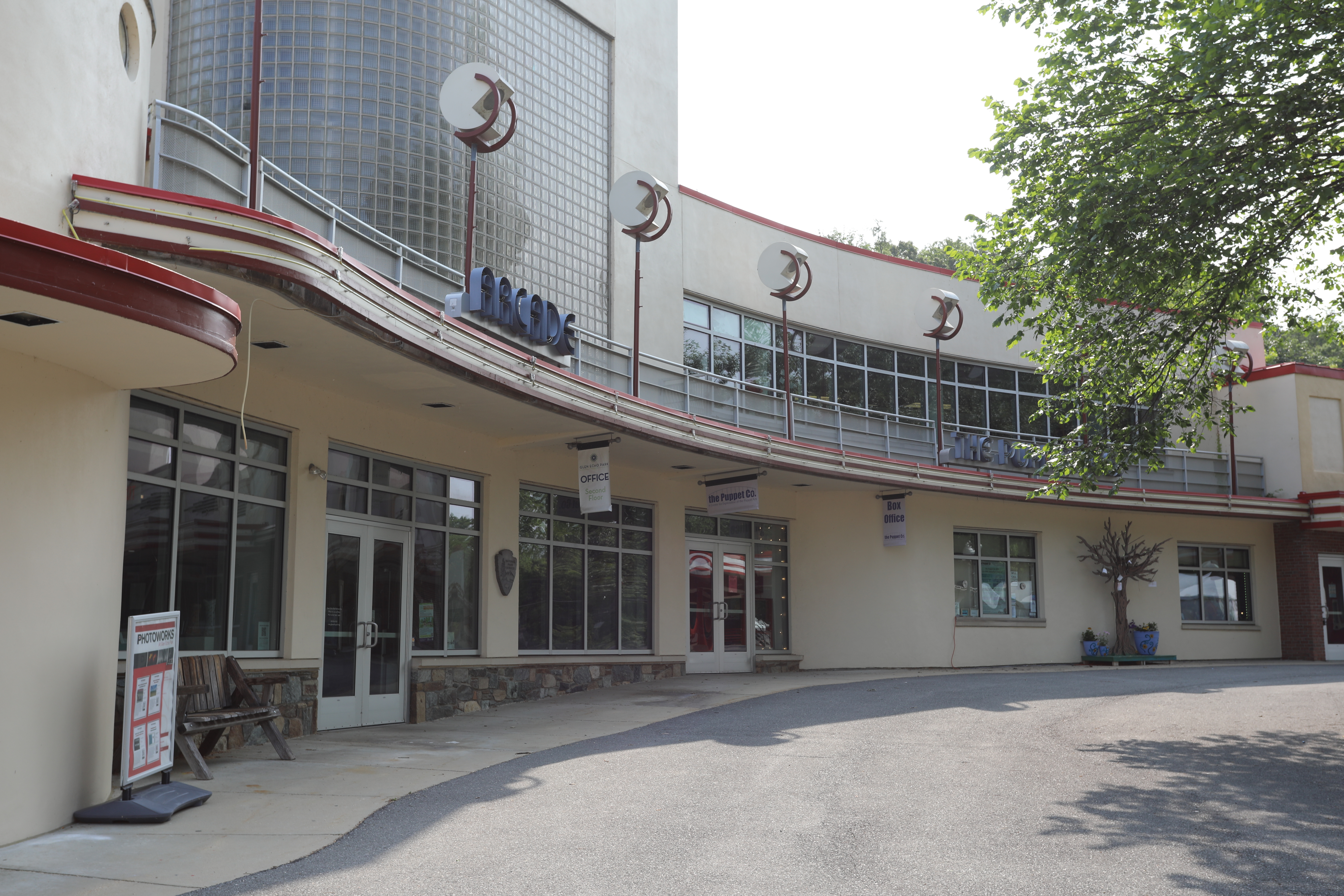
Bridge over Minnehaha Creek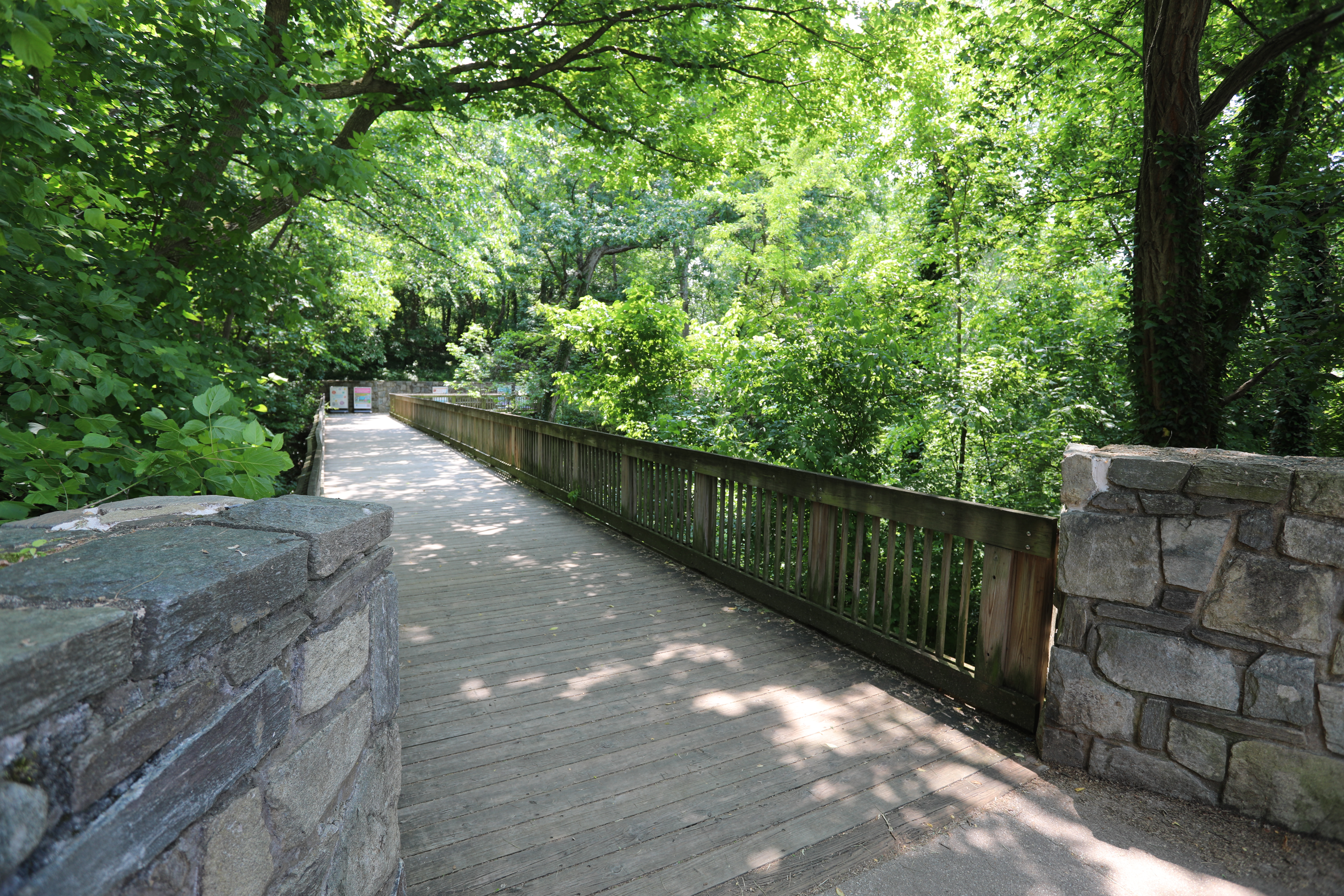
Bumper Car PavilionThe Bumper Car Pavilion was originally called the Skooter when it came to the park in 1923. In 1995, the National Park Service organized a major volunteer effort that included constructing a foundation wall, replacing floorboards, and stabilizing the structure. The Bumper Car Pavilion is now a populuar venue for dances, concerts, private rentals, classes, and special events. 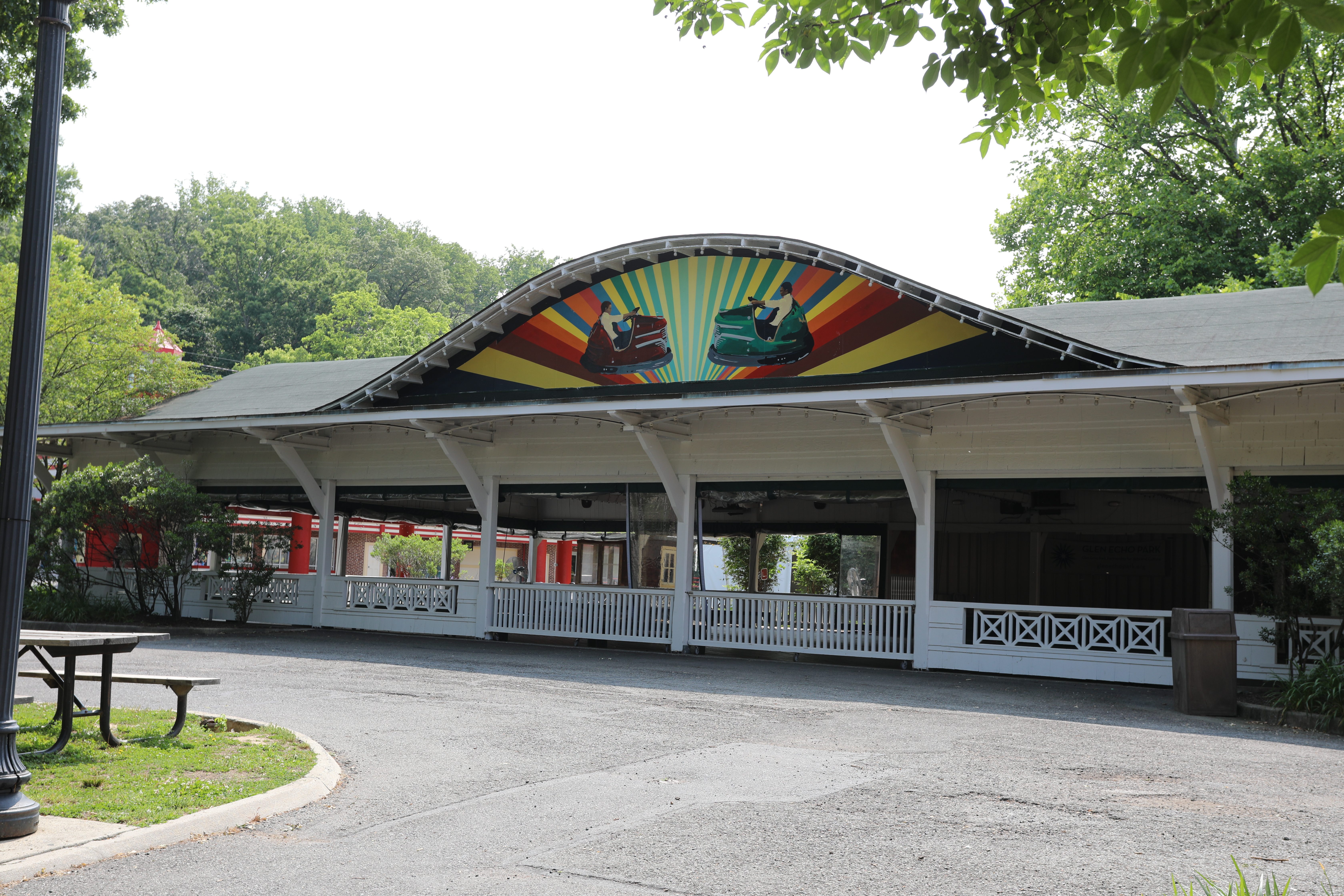
Candy CornerThe Candy Corner sold sweets - cotton candy, candied apples, lollipops, and ice cream - during the amusement park era. Rebuilt in 2007, this space has been used for classroom space and children's art programs. 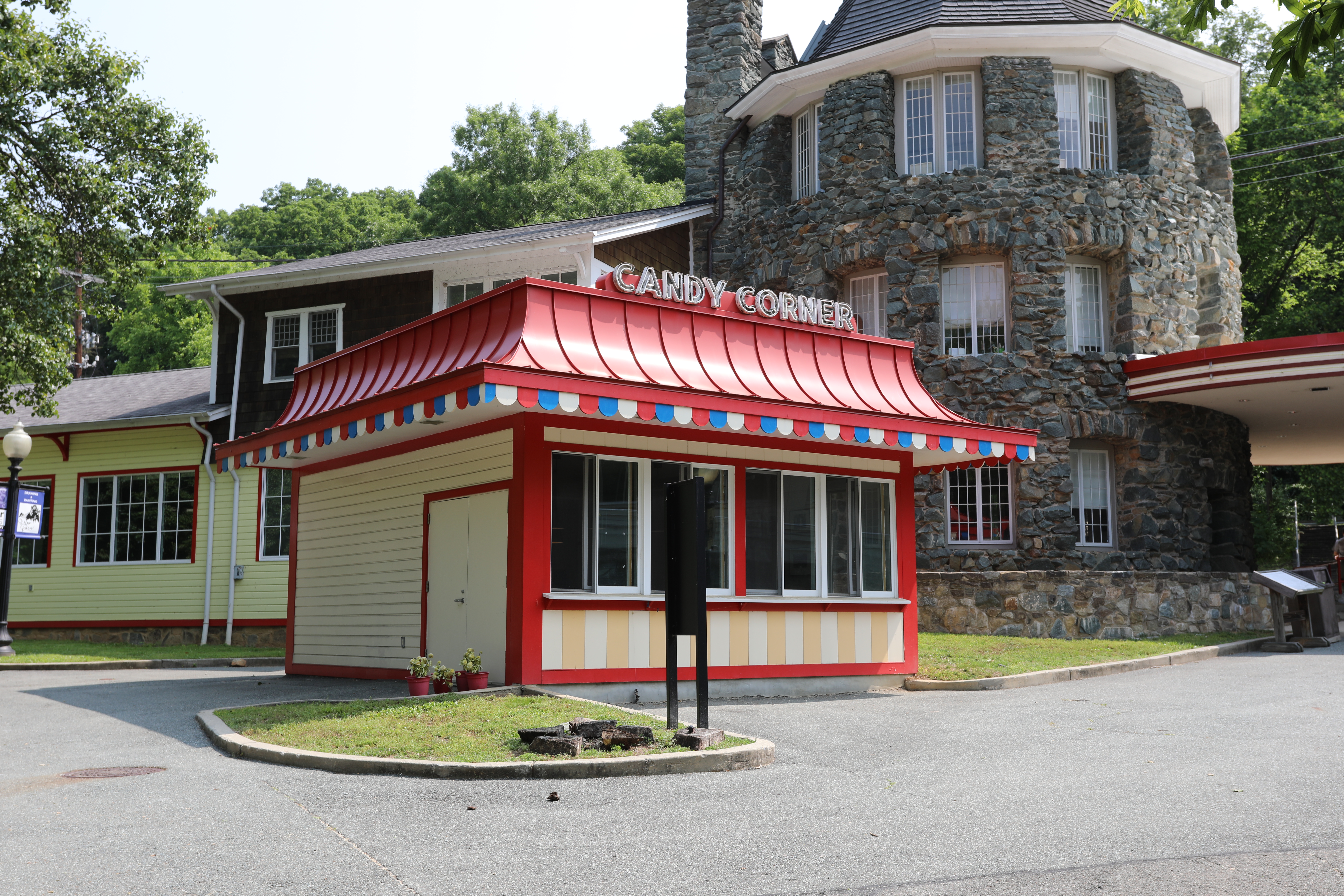
Caretaker's CottageThe stone Caretaker's Cottage dates from the Chautauqua era and was originally a two-story structure. Today, the remaining first level of the building houses the park's resident glassblowing studio. 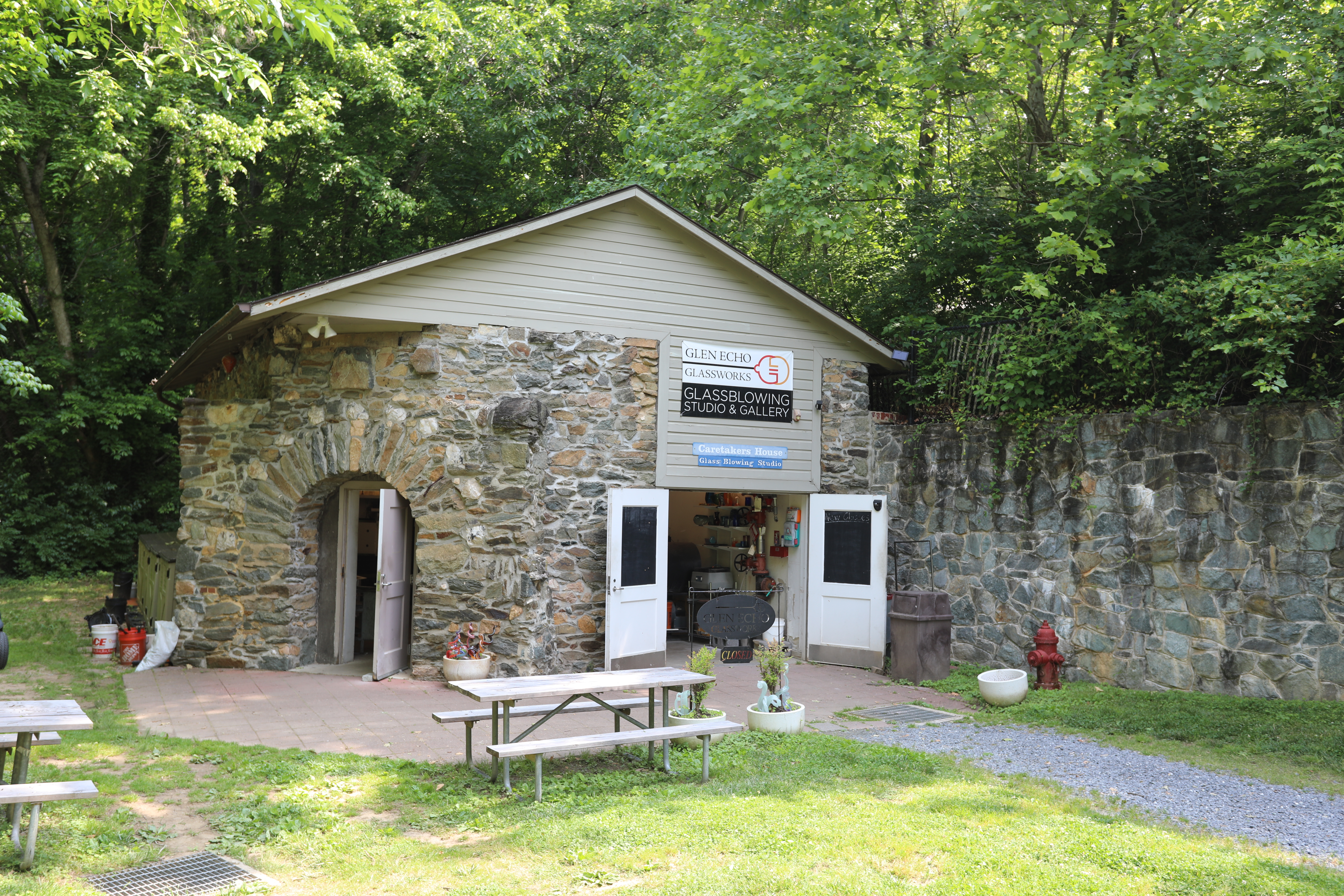
Chautauqua TowerThe stone tower, once an entrance gate and bell tower, is the only remaining intact building from the Chautauqua era. During the amusement park era, it housed the park superintendent and security offices for the park. Renovated in 2008, the tower now houses two artist studios. 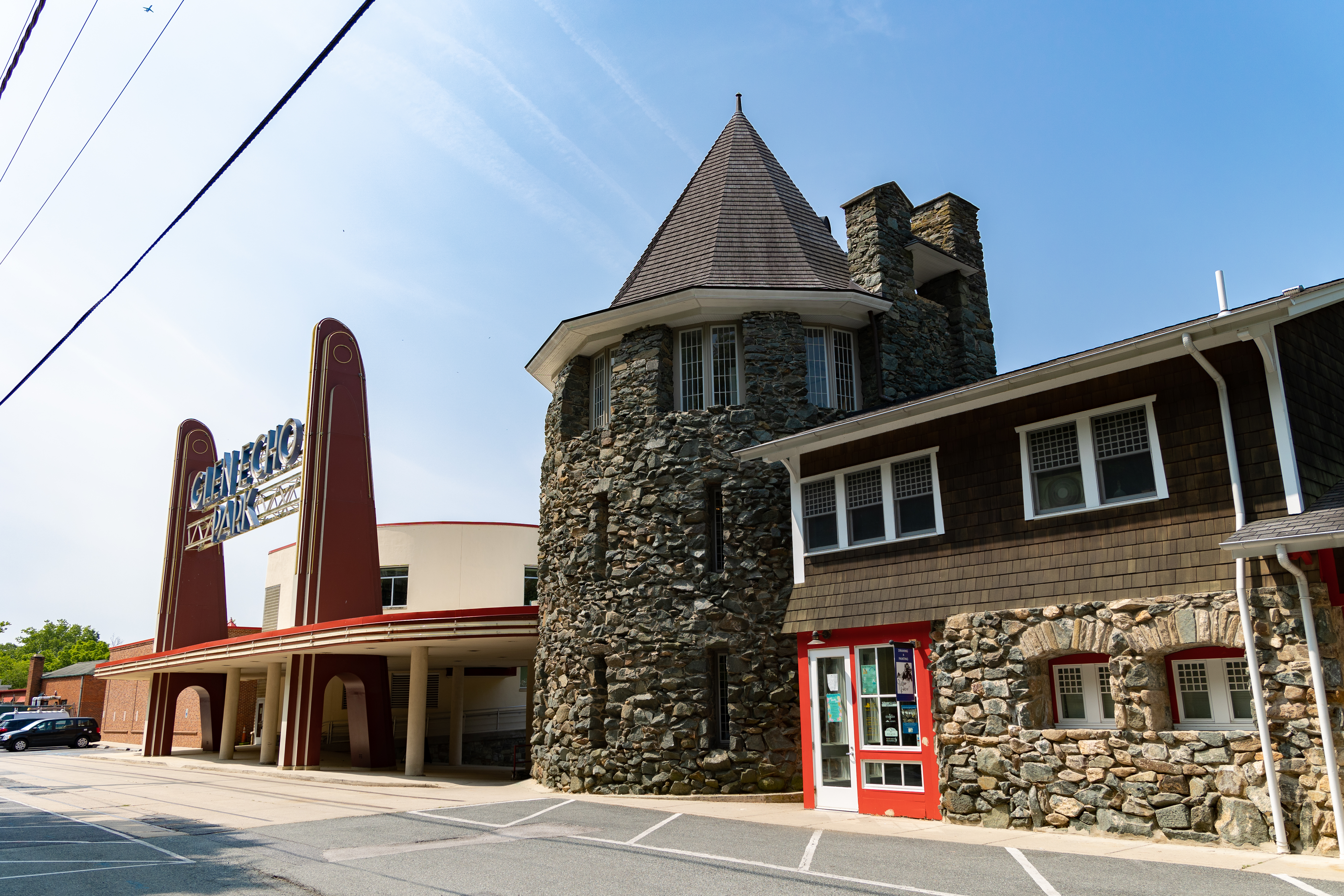
Clara Barton Home and Red Cross HeadquartersClara Barton dedicated her life and energies to help others in times of need - both home and abroad, in peacetime as well as during military emergencies. Glen Echo was her home the last 15 years of her life and the structure illustrates her dedication and concern for those less fortunate than herself. 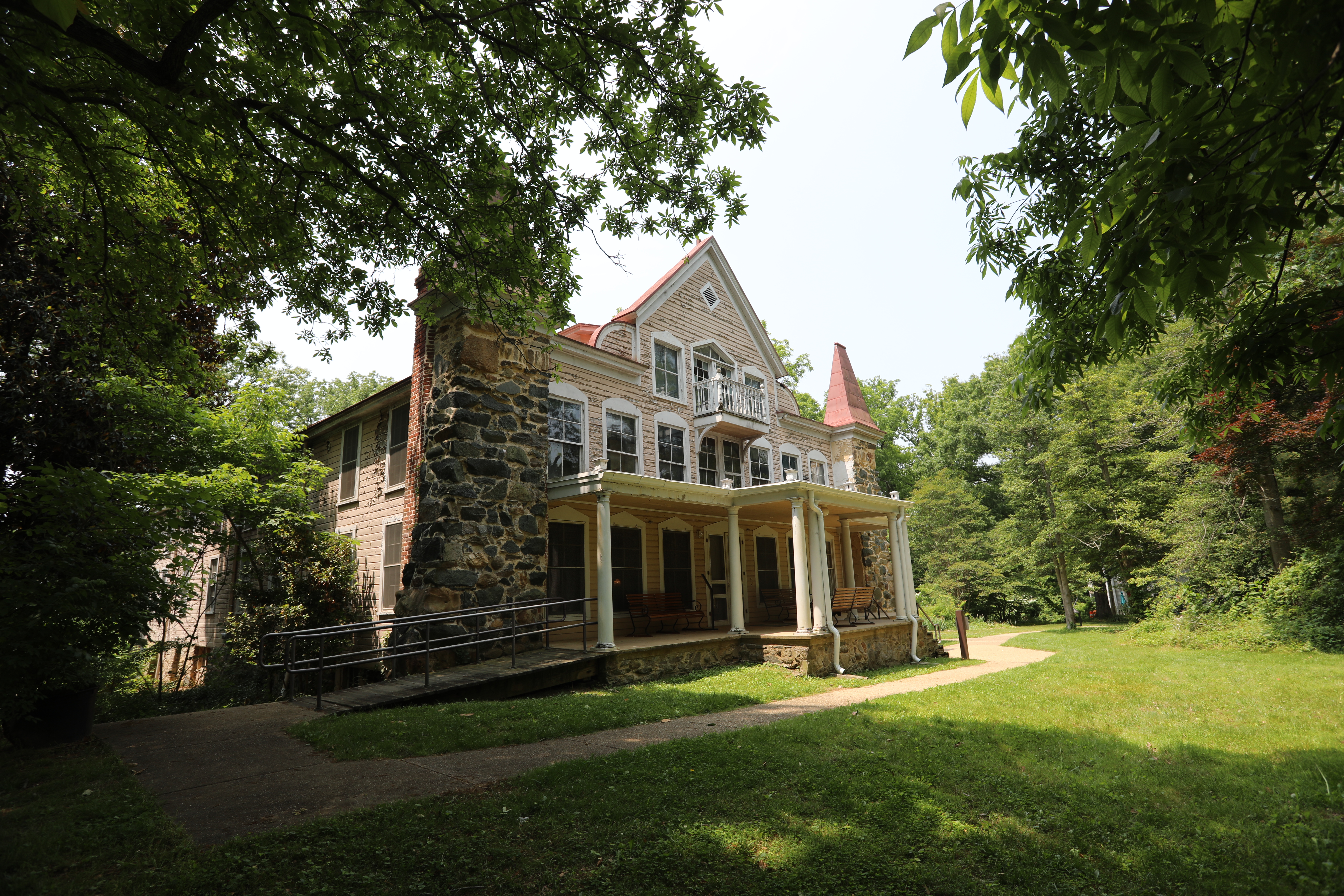
Comfort Station (Former NPS ranger station)
Crystal PoolThe Crystal Pool opened in 1931. It was an Olympic-sized pool that accommodated up to 3,000 swimmers. In addition, it featured a quarter-acre sandy beach. The pool was filled in after the amusement park closed. 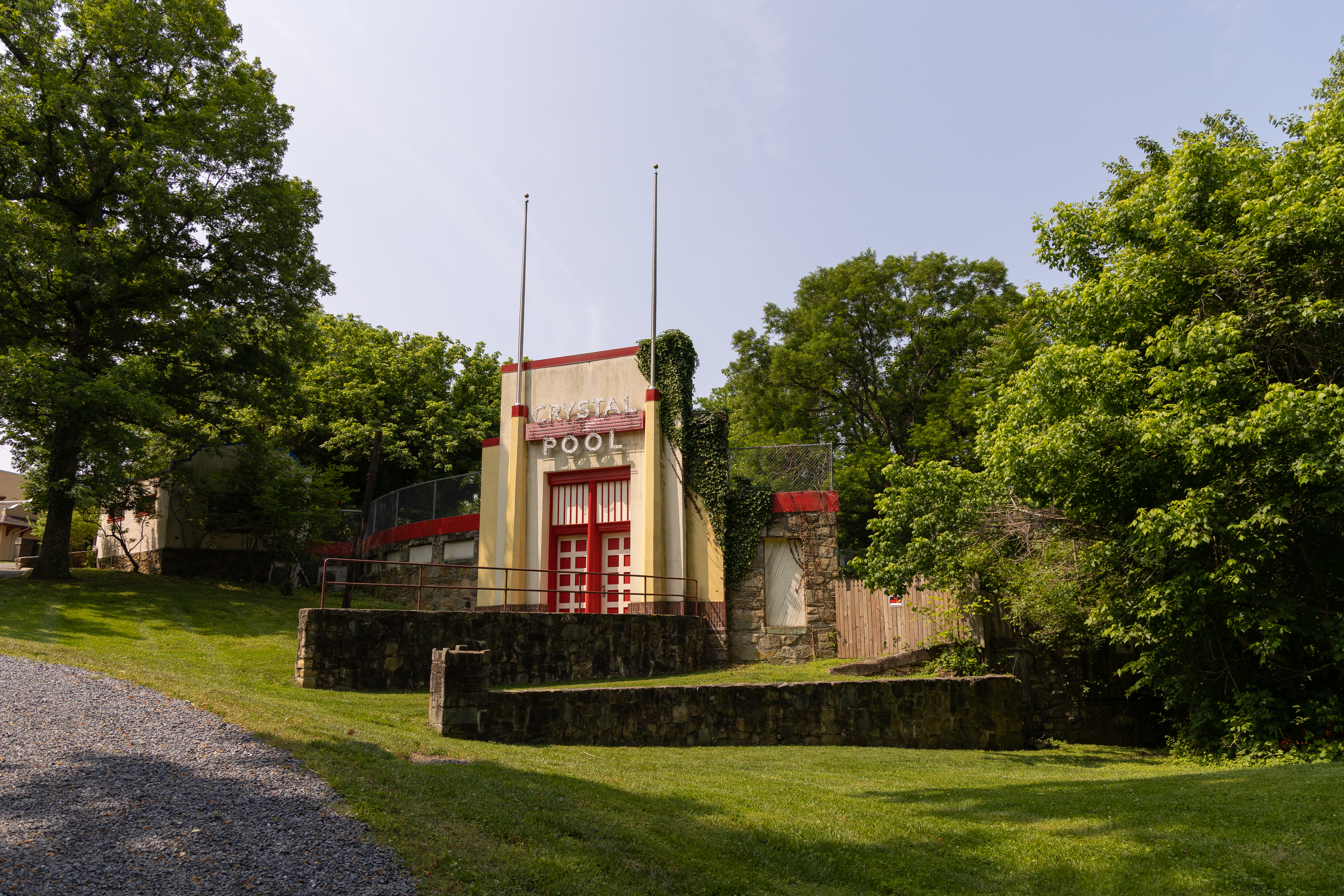
Cuddle UpThe Cuddle Up was a teacup ride that arrived in 1946 and remained popular until the park closed in 1968. Today, the pavilion is used for art classes and camp programs. The stage is ideal for performances. 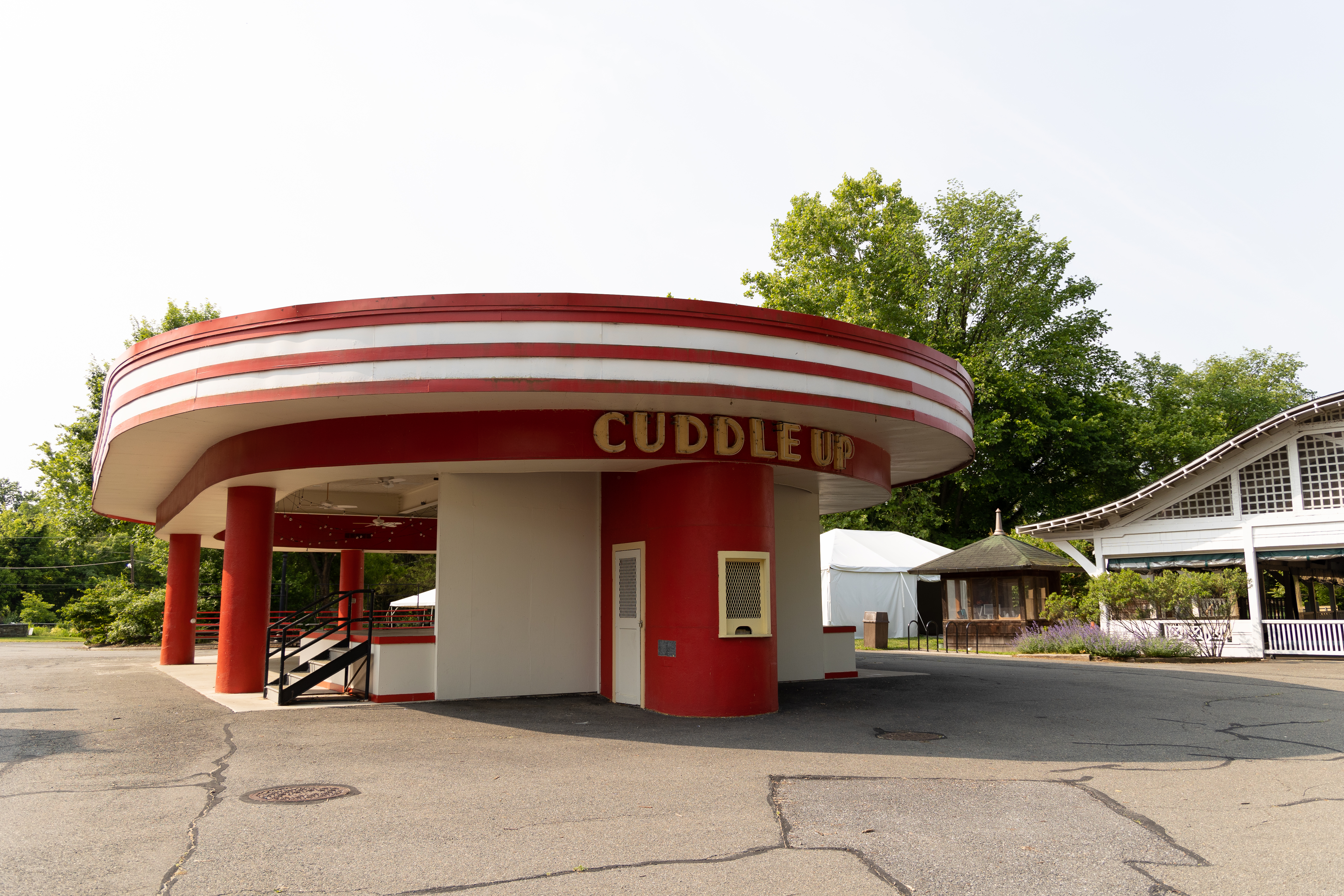
Dentzel Carouselnstalled at Glen Echo Park in 1921, the carousel was made by the Dentzel Carousel Company of Philadelphia, Pennsylvania. In 1960, it was the site of a sit-in protest against segregation. The carousel features a menagerie of animals who gallop to the music of a Wurlitzer band organ. 
Glen Echo AquariumDiscovery Creek Children's Museum, a Living Classrooms program, offers children's programs that continue the Chautauqua ideal of teaching about the natural world. The museum is located in a building that once housed the electric supply for the amusement park. 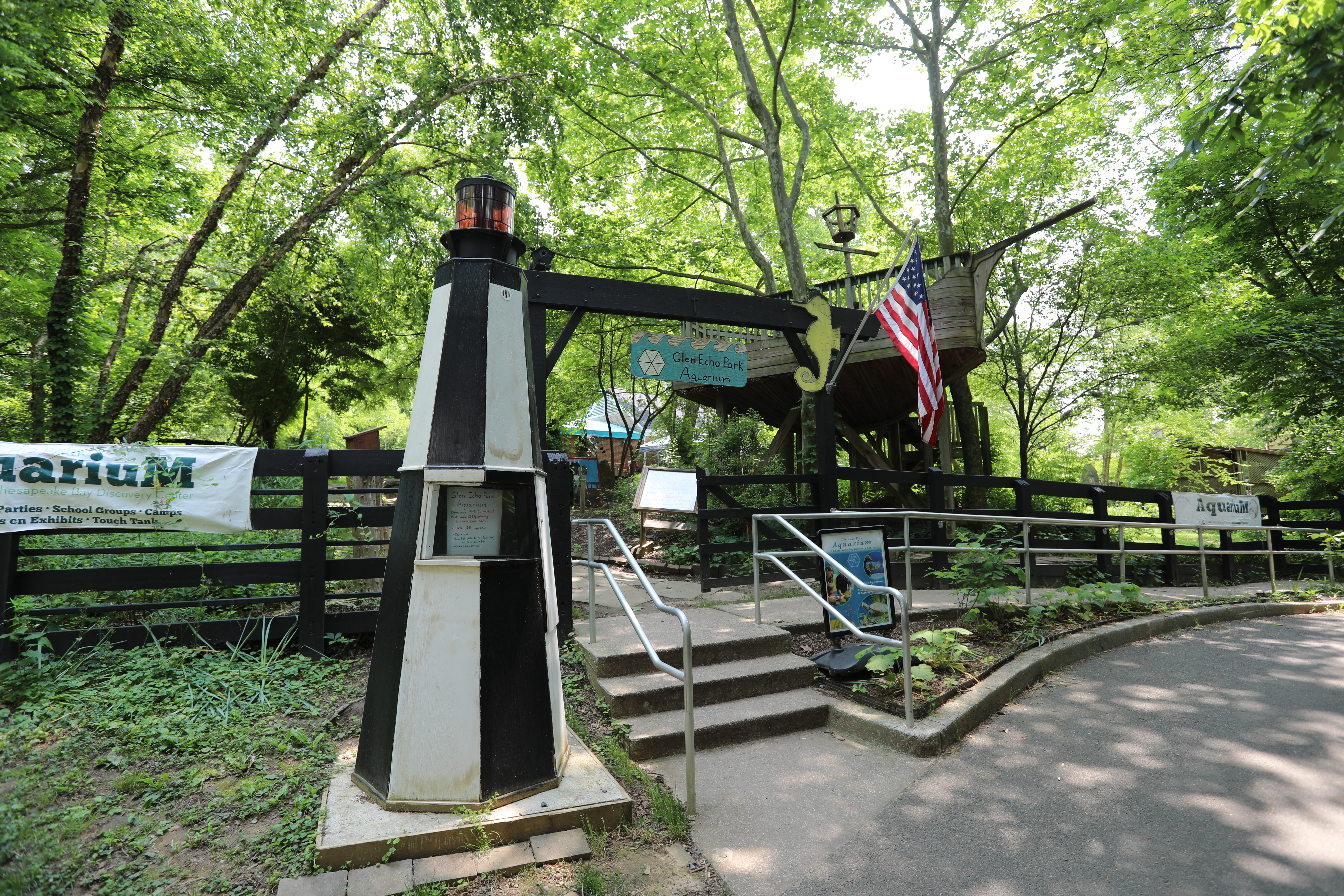
Glen Echo Park / Clara Barton NHS Parking LotGlen Echo Park Historic EntranceGlen Echo Park began in 1891 as a National Chautauqua Assembly "to promote liberal and practical education." By 1911, it transformed into DC's premier amusement park until it closed in 1968. Since 1971, the National Park Service has owned and operated the site and today, with the help of the Glen Echo Park Partnership for Arts and Culture, offers year-round cultural and recreational activities. 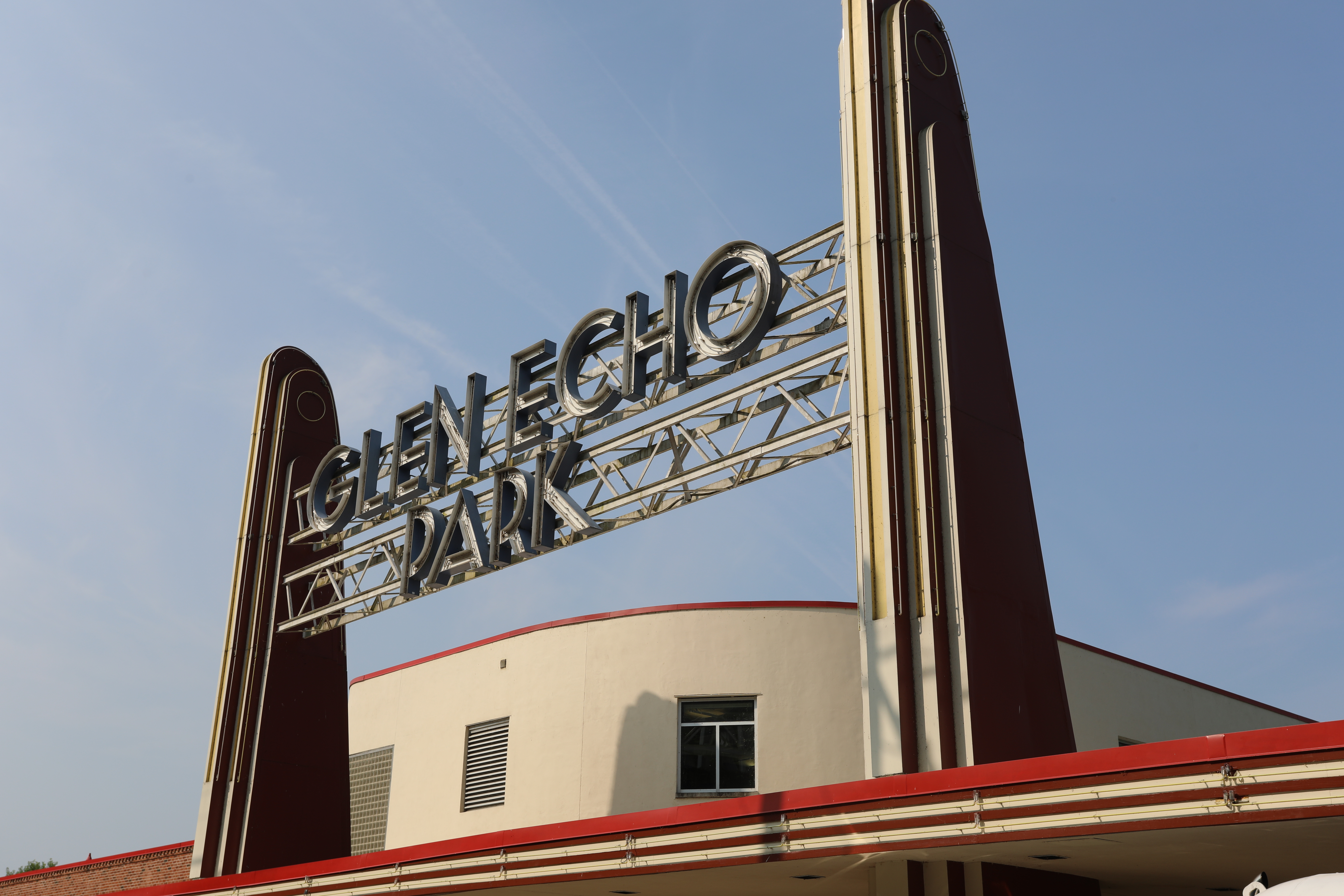
Hall of MirrorsBuilt in 1964, the Hall of Mirrors is now used for dance and movement classes. 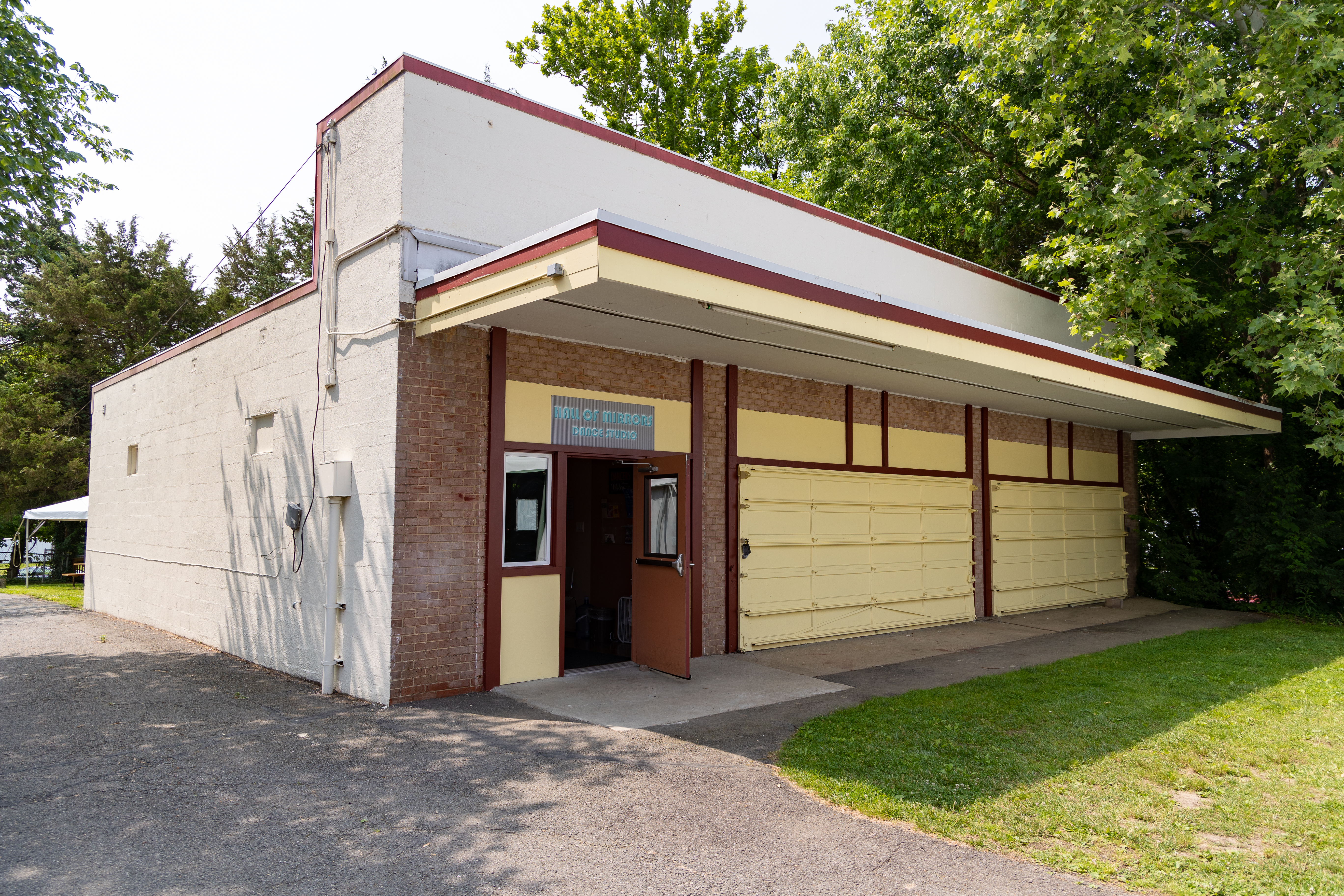
Information Panel: A Heroine's HomeBeyond the trees stands a Victorian house as unique as its owner. This house was built for Clara Barton in 1891 by Edward and Edwin Baltzley as part of the National Chautauqua at Glen Echo. 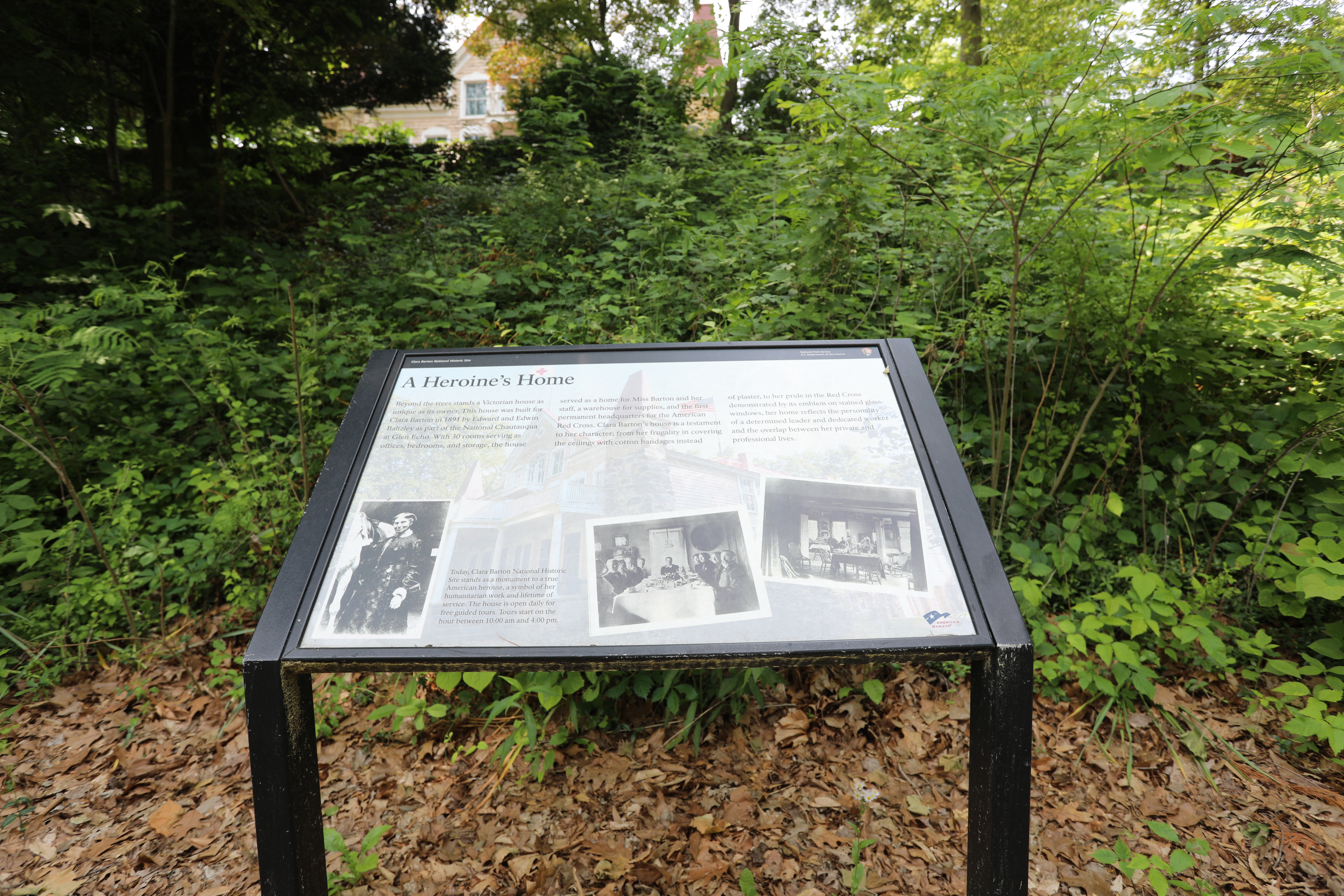
Information Panel: A Life of ServiceClara barton lived a life that transcended the limitations placed by society. She built a career of humanitarian service in a society that did not grant her full rights because of her gender. 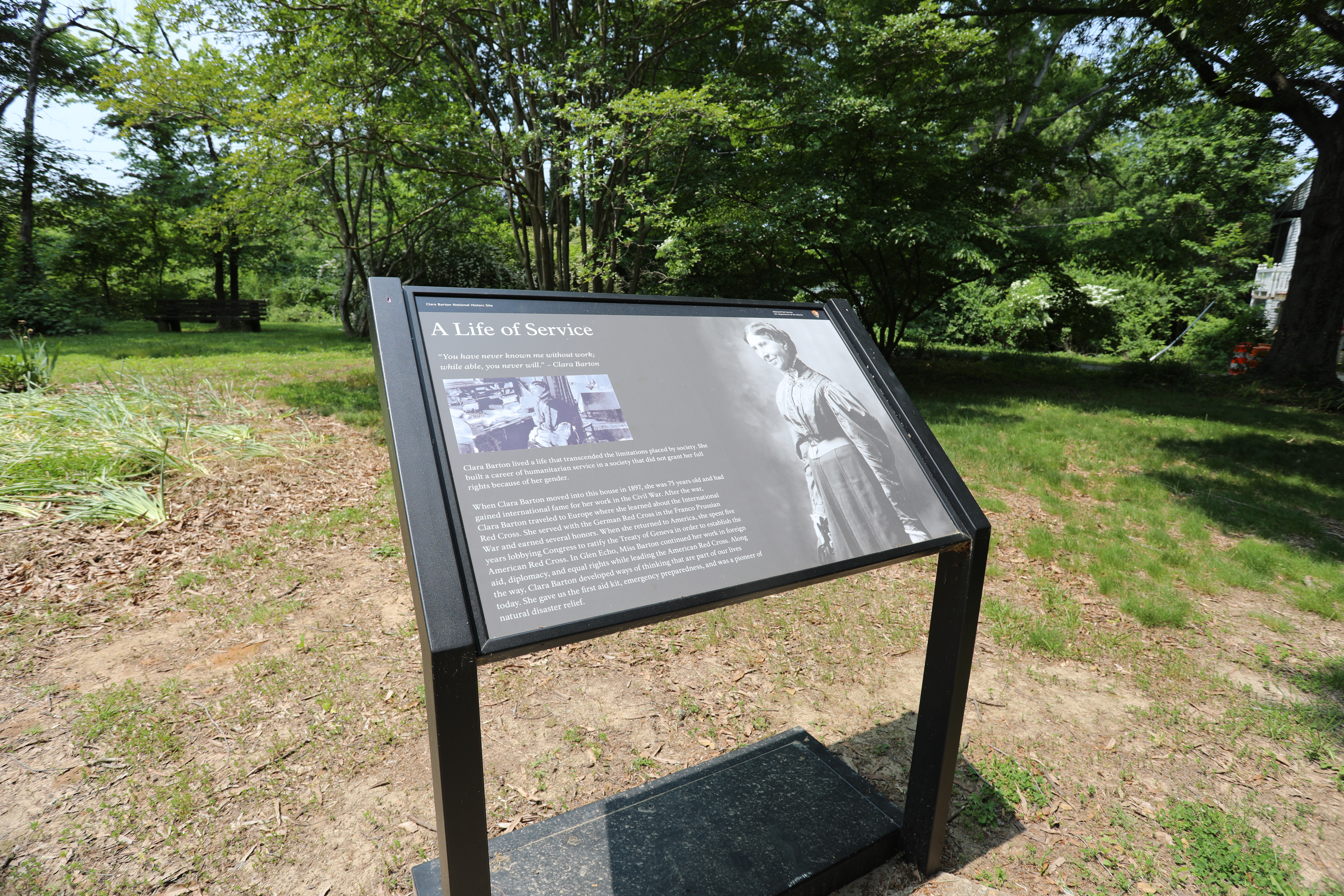
Information Panel: Glen Echo Park: Protest YearsOn June 30, 1960, local university students and citizens began a sit-in confrontation and picket line to challenge the long-standing segregation policies at the park. Their efforts succeeded in 1961 when the park's private owner, Rekab, Inc., finally opened its doors to all races. 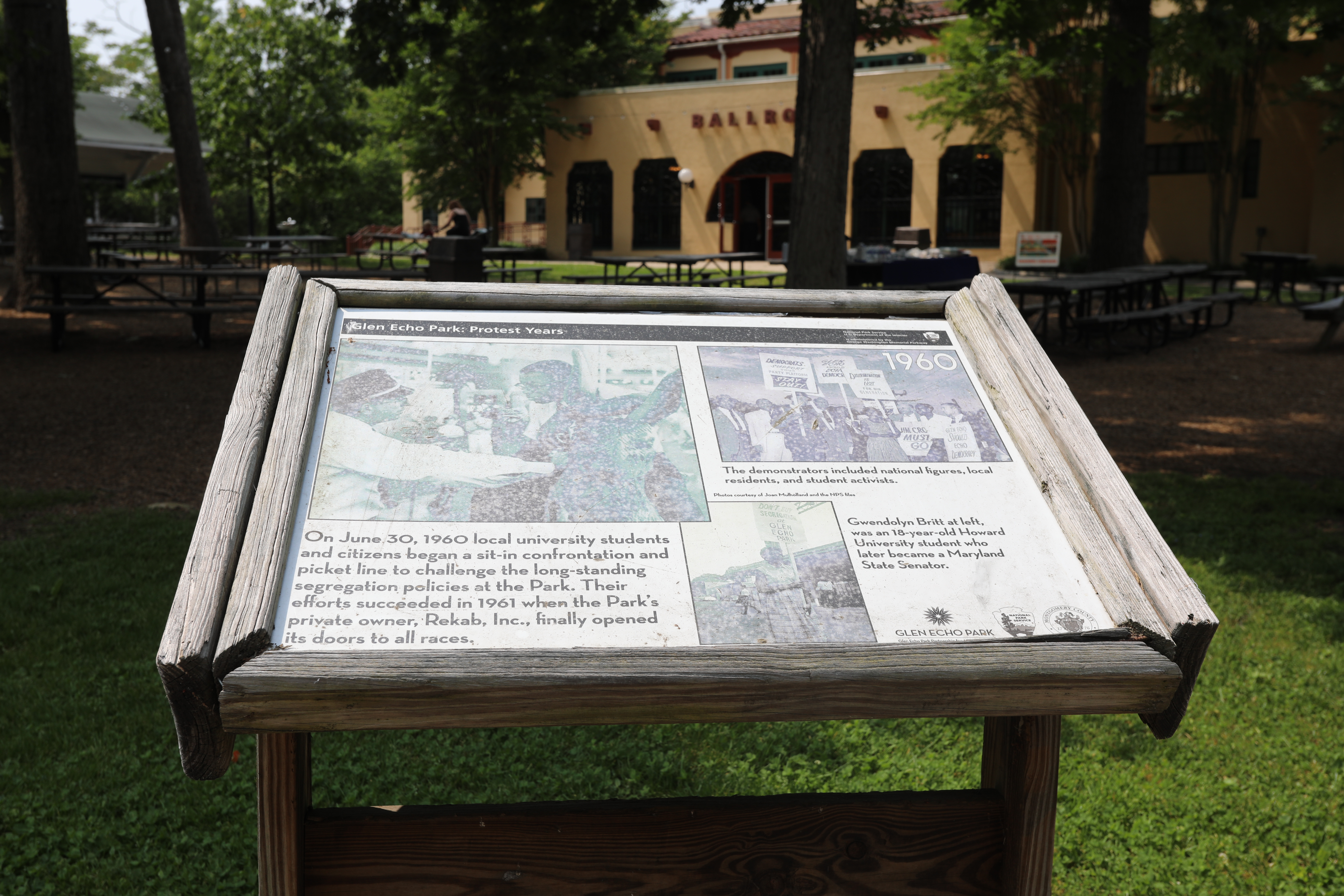
Information Panel: The Clara Barton TrailDid you know a heroine lived right here in Glen Echo, Maryland? Fearless, selfless, and determined, Clara Barton dedicated her life to helping others. Known as the "Angel of the Battlefield" during the Civil War and founder of the American Red Cross, Clara Barton broke away from the traditional roles set for women. 
Information panel: Minnehaha CreekThis deep ravine and rocky creek are typical of streams in the Potomac River Valley. Today Minnehaha Creek flows freely through Glen Echo Park. Changes made to the creek in the past 100 years mirror the history of Glen Echo Park. 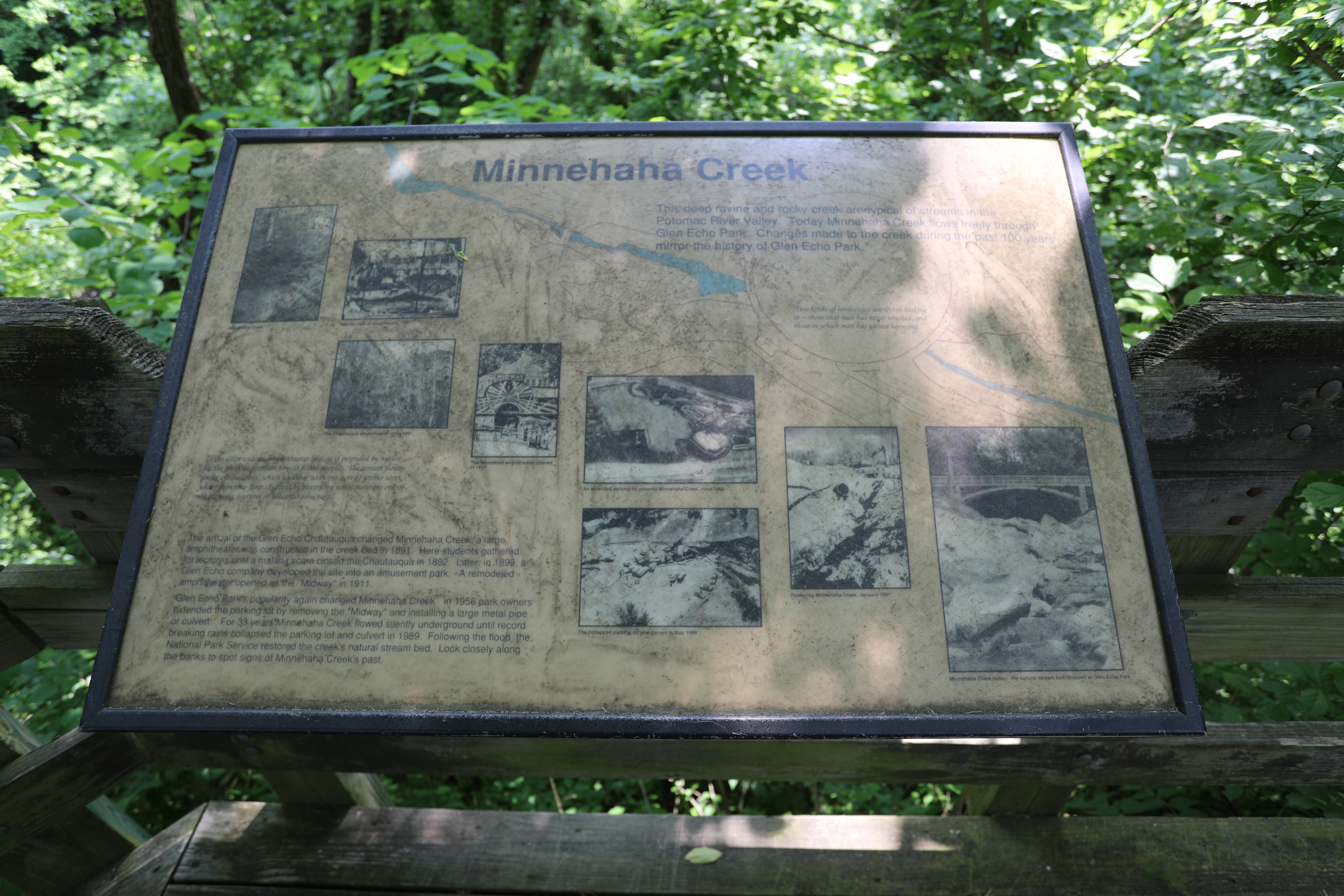
North Arcade / Glen Echo Park Visitor Center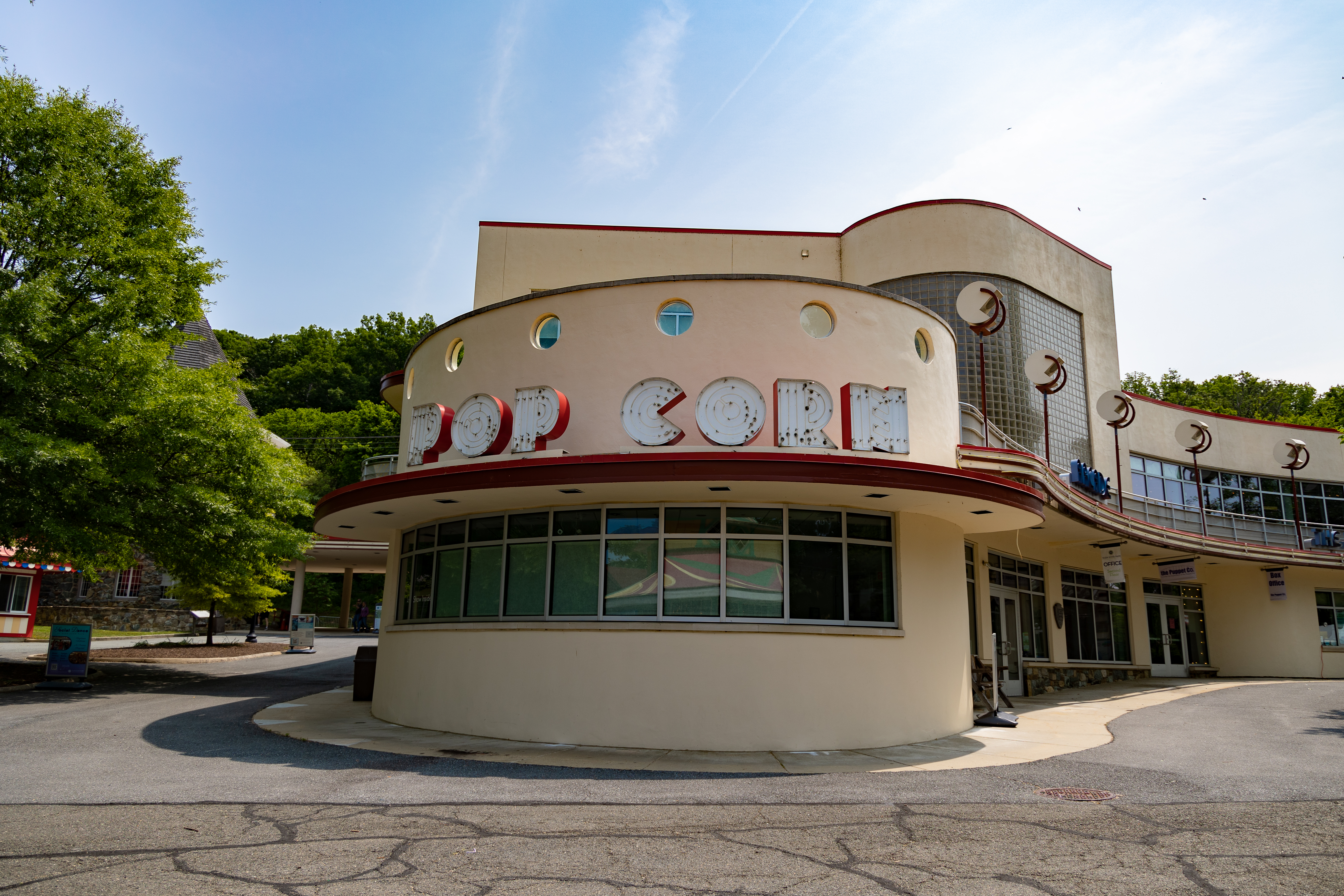
Spanish BallroomIn 1933, the mission-style Spanish Ballroom was built over the 7,500 square-foot floor of the previous Crystal Ballroom. Many big name bands - Tommy Dorsey, Artie Shaw, Lawrence Welk, Bill Haley and the Comets, and others - played to capacity crowds of up to 1,800 dancers. It is still one of the premier ballrooms on the East Coast. 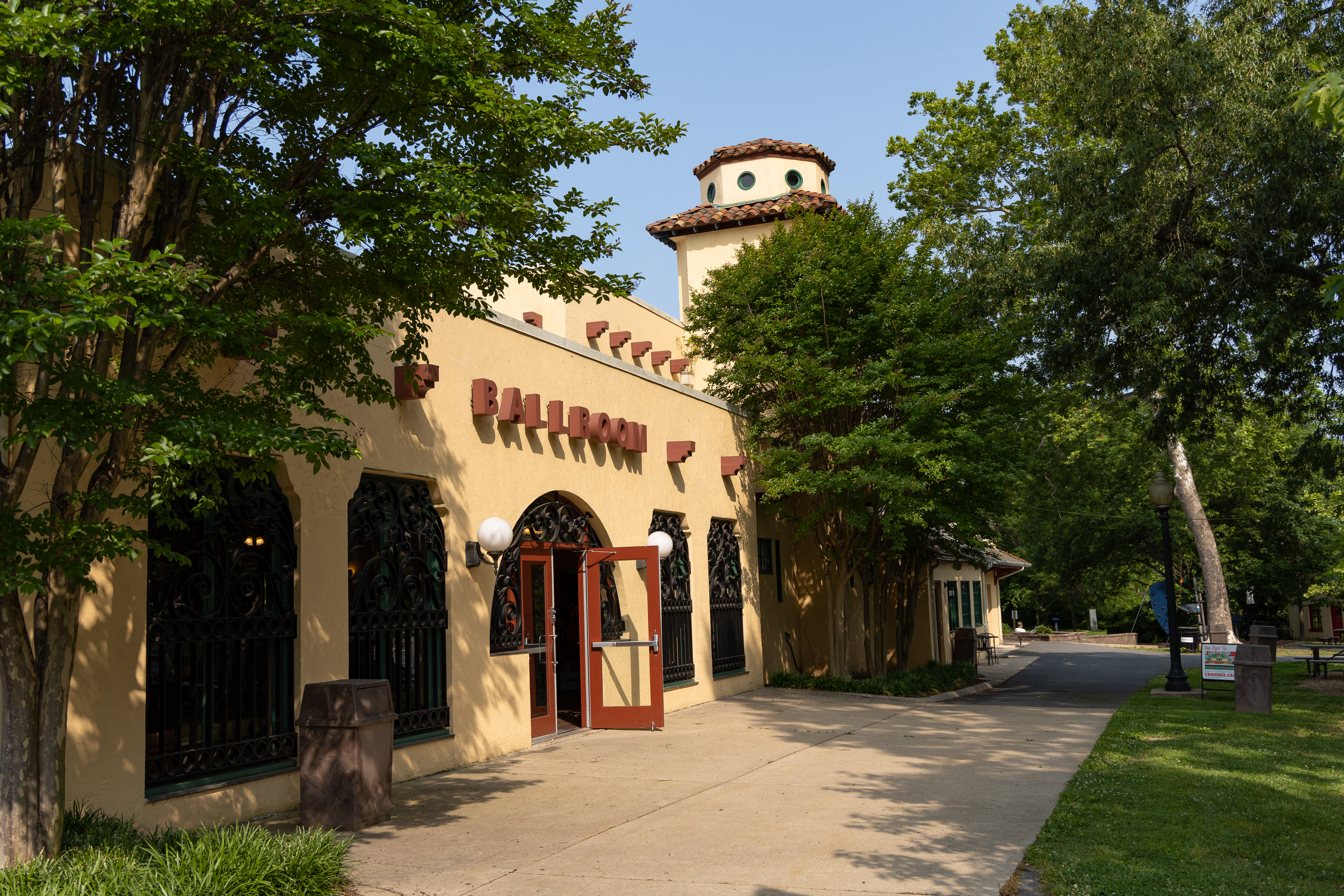
Yurt VillageThe yurt village in Glen Echo Park is studio space for local artisans and artists. 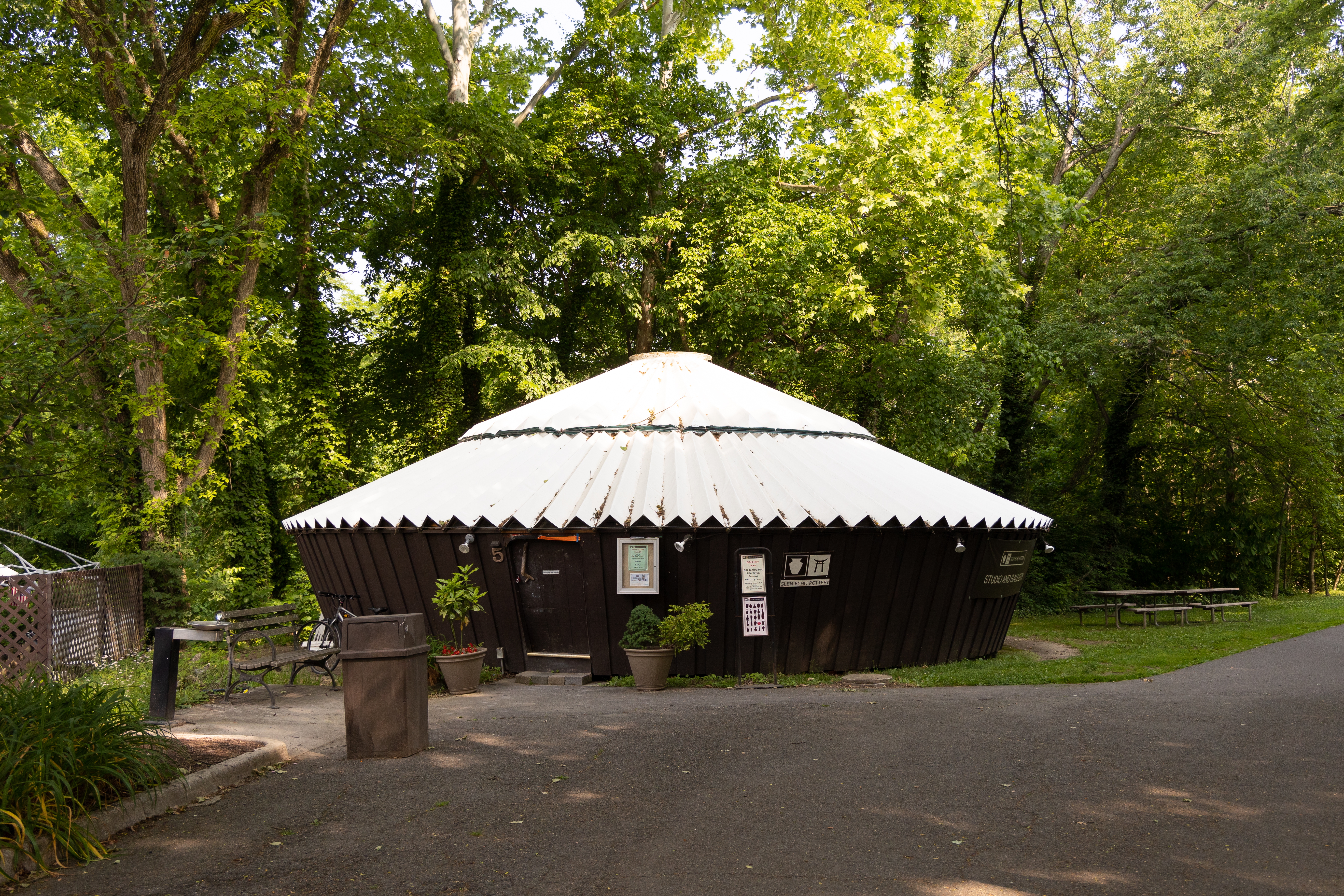
|
| Visitor Centers | Count: 0
|
| Things to do | Count: 1 |
| Tours |
Count: 1
Walking TourTake a 0.7-mile stroll through historic Glen Echo Park and discover artists and artisans working away in buildings that used to house amusement park and Chautauqua experiences. |
| Articles |
|
